I was in England for a week this month and although, on a previous trip, I’d visited most of the places where my mother lived, I had one more pilgrimage to make. My mother’s cousin, Jane, and her daughter, Bets, live on a sheep farm near Ross on Wye.
My mother loved to visit them, and now it was my turn. When Bets invited my husband and me to come stay, she wrote: “I hope you like dogs.” Luckily, we do. Not to mention sheep, horses and a herd of pregnant cows.
In preparation for our visit, I read THE SHEPHERD’S LIFE: Modern Dispatches from an Ancient Landscape by James Rebanks, a bestseller by a sheep farmer who speaks eloquently about roots and community and a tough, rewarding life in the constant company of animals. Because of the book, I understood a little better the demands and rewards of farming sheep. Mr. Rebanks’ farm, inherited from his grandfather and father before him, is set in the Lake District of England. My cousins’ farm lies near the Welsh border, but their challenges are much the same.
Fall is the season when the ewes are impregnated and so Bets has spread their 140 ewes in different fields where they are “serviced,” one tup (ram) to 30 ewes. The tups’ chests are smeared with raddle, a mixture of red dye and truck oil, (“They recommend olive oil,” Bets says, “but I find machine oil works better”) so that you can tell which ewes have been mounted by the color of their red rear ends. In two weeks, the tup will get a blue dip and in another two weeks, a green dip. This way, it’s easier to know when the lambs will be coming. This is also the season when the lambs born last spring are taken to market. British shepherds are struggling for many reasons, but the major one is that the cost of British lamb has been undercut by the cheap New Zealand lamb that comes over in huge refrigerated ships. Many days, Bets has to sell the lambs to be slaughtered at cost.
Next spring, from February until April, Bets and her mother will not sleep more than two hours at a time as it’s lambing season. There are the babies to be bottle fed because their mother has rejected them or they are too weak to suck. Some ewes must be assisted through a difficult birth while others have to be rounded up and brought in closer to the barn. And besides that, of course, the six horses have to be fed and watered twice a day, not to mention the eleven cows and their calves. When we let the cows out to pasture, Bets explained to me that a few years ago, when some of their cows caught tuberculosis from the badgers, the entire herd had to be culled. Bets is trying to build the herd up again with these eleven. “They’re each carrying 90 pounds of calf,” she called to me proudly as the large ladies lumbered past us on the way to the lower field.
After lambing, the sheep are sheared. As an enthusiastic knitter, I was hoping to hear that the wool would bring in a good profit, but I was wrong. The price they get for the wool basically pays the cost of the shearer. It makes sense. A hundred years ago, everybody wore wool to get through the cold winters. Now so many of our clothes are synthetic. And Bets and her mother raise lambs for meat, not for their wool.
My cousins have worked hard to find alternate ways to make money from the farm. One of these is renting the land out for various purposes such as orienteering exercises and reenactments. The day we were there, a group was running simulated war games for journalists soon to be posted to war torn areas. Bets moved some sheep to a pasture further away so that the noise of fake explosions and shooting wouldn’t disturb them. When a man trotted by the kitchen door, Bets explained that he was one of the actors who was supposed to be wounded. An old jeep had been parked near the barn to be used in the exercises although someone had misplaced the keys so for the moment it was gathering dust.
Although my grandfather was a dairy farmer in Connecticut, I’m a city dweller who takes the subway, doesn’t own a dog, and buys her yarn at a local knitting shop. I do love buying local and am happy that farmers are now bringing their produce to markets on our busy city streets, but I don’t grow my own vegetables or raise sheep. (However when I told Jane that I order my groceries online, she said, “Well, so do I.” The British grocery store chain, Waitrose, undaunted by the muddy track, delivers to the farm.)
Bets and Jane are stalwart and strong, and they need to be. The demands of the farm are relentless. The needs of the animals take precedence. They work in all seasons and all weather. They don’t sleep in or take vacations. Their boots are always muddy, their clothes are often soaked to the skin. They work harder than anybody I’ve ever met. And for the most part, they love what they do.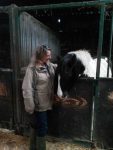
I sat on the same kitchen bench where my mother sat a decade ago, looked out over the same green hills, slept in the same upper room with the warm eiderdown. In the three years since my mother died, I’ve been retracing her footsteps all over England so for me, this visit had a special resonance. At the same time, while alighting briefly on a piece of my own past, I came away feeling as if I’d slipped over an invisible wall into another “ancient landscape,” a place where the weather and the seasons and the animals determine the rhythm of the day.
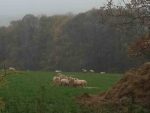
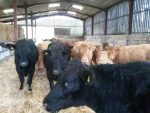
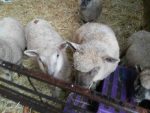

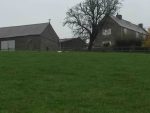




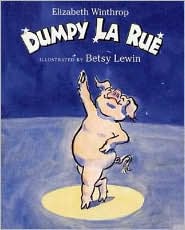
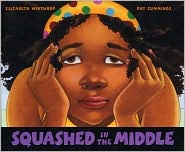

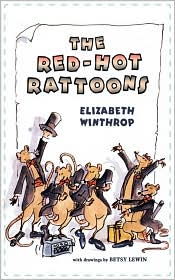

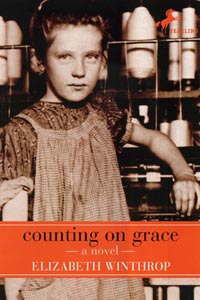
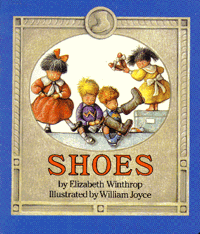



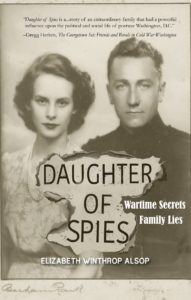
Loved this blog post. The old war jeep and the lost key in the midst of Scotland’s meadows – what a vivid picture. Thanks for sharing.
Wow, incredibly hard work and yet I can imagine, the way you describe it with such attentive detail, that it must be quite satisfying. Love your pictures, too! Very lovely piece–I feel like I was there with you! And your mom! Thanks!
That is a wonderful story and tribute to your cousins. I love to hear about families through their generations, and those who are carrying on the traditions and way of life. I can’t help but wish you’ll write a new story just about them. Illustrator Jan Brett came to mind more than once. Thank you for sharing!
Really interesting, and it is really vivid and easy to imagine having seen the landscape!